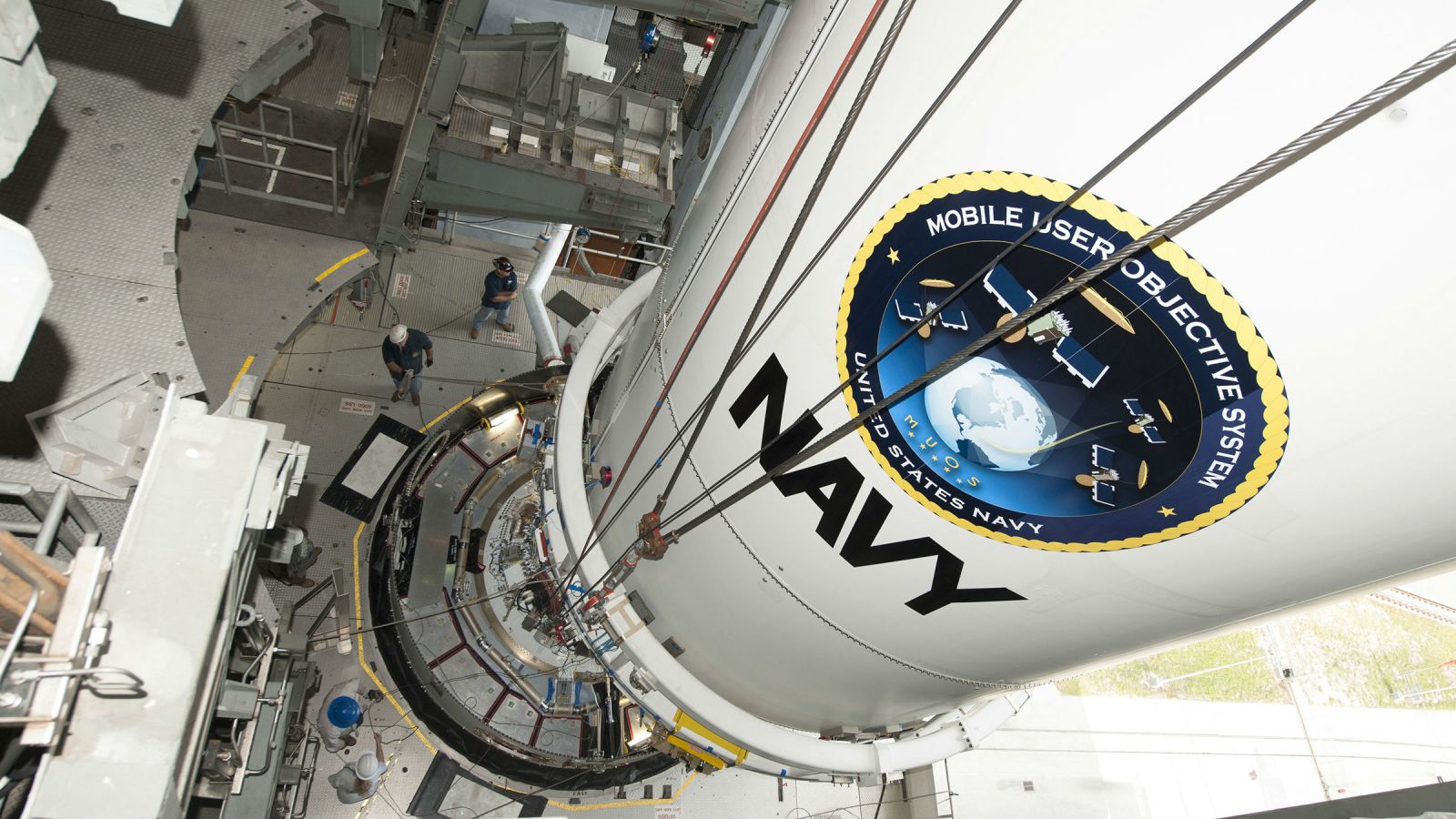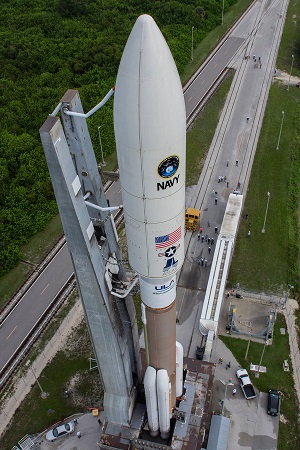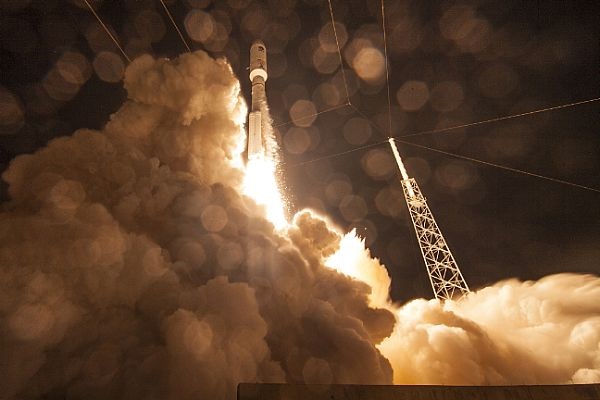[Photos] What's the Navy Doing in Space?

By Vice Admiral Jan Tighe, Commander, U.S. Fleet Cyber Command / U.S. 10th Fleet
It’s difficult to discuss the Navy mission in space without recognizing Star Trek for predicting that the Navy would play a major role in the final frontier. With due respect to Mr. Roddenberry, the Navy does not go it alone; rather, we are a part of the Defense Department’s space operations team.
I think there may be some people who would be surprised to learn that the Navy has a mission in space – they might also be surprised to know that the U.S. Naval Academy has produced more astronauts than any other undergraduate institution.
With the scheduled launch of the Navy’s fourth Mobile User Objective System (MUOS) satellite Wednesday, September 2, we are nearing completion of a satellite constellation that provides our warfighters with 10 times more communication capacity over the legacy system.
 MUOS is a complex orchestra comprised of a five-satellite constellation, four ground stations across the globe, an integrated waveform (from beautiful mathematics!), radios and complex software to manage the network.
MUOS is a complex orchestra comprised of a five-satellite constellation, four ground stations across the globe, an integrated waveform (from beautiful mathematics!), radios and complex software to manage the network.
U.S. Fleet Cyber Command/U.S. 10th Fleet is unique in that it is not bounded geographically. My operational domain encompasses cyberspace, the electromagnetic spectrum and space, and we operate there from around the globe, 24/7/365.
In the space domain, my Fleet is responsible for “flying” our assigned Navy spacecraft, which is tactically done through the Naval Satellite Operations Center (CTG 1010.3), under the operational control of Task Force 1010 (Navy Network Warfare Command) and the tactical control of STRATCOM’s JFCC-Space.
These satellites provide critical telecommunications support to globally-deployed operational forces, not just the Navy. Given the current state of our interconnectedness, I don’t need to explain how important reliable communications are – think about the last time your GPS lost satellite reception or your cell phone lost service – it can make for a rough day.
What is so important about the launch of MUOS-4 is that it provides capability and reliability at an unprecedented level. While our legacy system allowed users to “talk” with capabilities similar to a smartphone, the capability was limited to users in the same satellite footprint.
MUOS allows forward deployed forces to talk, text and share mission data seamlessly without having to worry about where they are in relation to a satellite.
My strategic goals are to:
• Operate the Navy network as a warfighting platform;
• Conduct tailored signals intelligence;
• Deliver warfighting effects;
• Create shared cyber situational awareness; and
• Establish and mature Navy’s Cyber Mission Forces
The ability to have reliable and capable communications is critical to my mission, as well as every maritime commander operating forward who relies on Navy and joint satellite capabilities for assured command and control.
So …what is the Navy doing in space? We’re ensuring freedom of action and decision superiority for our Navy and joint forces, and denying our adversaries the same. We will win in space, as in cyberspace and the electromagnetic spectrum, through our collective commitment to excellence and by strengthening our alliances with entities across the U.S. government, Department of Defense, academia, industry and our foreign partners.
*
After a two-day delay due to tropical storm conditions, the Navy's fourth Mobile User Objective System (MUOS) satellite launched at 6:18 a.m. EDT on September 2 from Space Launch Complex 41.
The opinions expressed herein are the author's and not necessarily those of The Maritime Executive.



